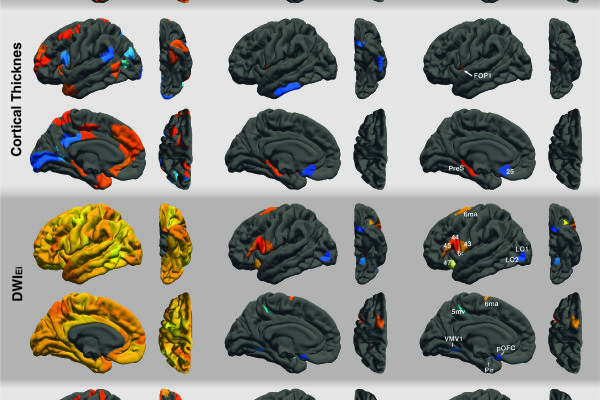2023-04-13

Intelligence is highly heritable. Genome-wide association studies (GWAS) have shown that thousands of alleles contribute to variation in intelligence with small effect sizes. Polygenic scores (PGS) can be used to combine these effects into one genetic summary measure. With PGS it is possible to investigate genetic predispositions in smaller, independent samples. While the genetic association of PGS with intelligence have been shown multiple times, it is largely unknown how brain structure and function are working as a neurobiological pathway behind these genetic effects. Here, we show that individuals with higher PGS for educational attainment and intelligence had higher scores on cognitive tests, larger surface area, and more efficient fiber connectivity derived by graph theory. Efficiency of fiber connectivity means that brains are organized in a way that information can easily be passed from one brain area to another with relatively energy needed. Fiber network efficiency as well as the surface of brain areas partly located in parieto-frontal regions were found to mediate the relationship between PGS and cognitive performance. Thus, genes associated with intelligence shape surface area and fiber network efficiency of our brain and these properties then in turn facilitate our intelligent thinking. These findings are a crucial step forward in decoding the neurogenetic underpinnings of intelligence, as they identify specific regional networks that link polygenic predisposition to intelligence.

Intelligence is highly heritable. Genome-wide association studies (GWAS) have shown that thousands of alleles contribute to variation in intelligence with small effect sizes. Polygenic scores (PGS) can be used to combine these effects into one genetic summary measure. With PGS it is possible to investigate genetic predispositions in smaller, independent samples. While the genetic association of PGS with intelligence have been shown multiple times, it is largely unknown how brain structure and function are working as a neurobiological pathway behind these genetic effects. Here, we show that individuals with higher PGS for educational attainment and intelligence had higher scores on cognitive tests, larger surface area, and more efficient fiber connectivity derived by graph theory. Efficiency of fiber connectivity means that brains are organized in a way that information can easily be passed from one brain area to another with relatively energy needed. Fiber network efficiency as well as the surface of brain areas partly located in parieto-frontal regions were found to mediate the relationship between PGS and cognitive performance. Thus, genes associated with intelligence shape surface area and fiber network efficiency of our brain and these properties then in turn facilitate our intelligent thinking. These findings are a crucial step forward in decoding the neurogenetic underpinnings of intelligence, as they identify specific regional networks that link polygenic predisposition to intelligence.